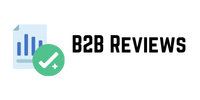If you can, use your target keywords upfront. Title and subtitle. Use primary target keywords and secondary keywords sparingly and naturally. Meta description. This will be the snippet shown in the SERP and therefore will impact the CTR. Include your target keywords naturally and make sure they are engaging. Use appropriate keywords in the image’s alt text attribute.
Your URL (more details below)
2. URL Optimization Your URL is often the first thing Google and your customers see. When optimizing it, c level contact list you need to consider your human audience and Google’s search algorithm. That is, make sure it’s comprehensive enough for human readers, but make sure Google can index it easily.
Generally speaking, shorter
URLs that contain your exact target keyword perform better. So for example, if your website is xxx.yy and your target keyword is “brandbuilding”, the URL could look like this: xxx.yy/brandbu now apply that same thinking to ilding or xxx.yy/brandbuilding Or it could be deeper within your domain and look like this xxx.yy/blog/brandbuilding What if we have multiple pieces of content targeting the same keyword? In this case, there are two different approaches.
The first is to create unique
URLs based on the title of the content, so: xxx.yy/blog/brand-building and xxx.yy/blog/brand- european union phone number building-techniques Or you can do this: xxx.yy/blog/brand-building/strategies and xxx.yy/blog/brand-building/techniques Avoid unnecessary duplication of keywords, such as xxx.yy/blog/brand-building/brand-building-techniques The bolded parts are unnecessary.
Make sure you structure your
URL correctly so Google can index it easily. Additionally, some CMS (Content Management Systems) may automatically generate URLs that end up looking like this: xxx.yy/blog/?brandbuilding=7172 This is called a dynamic URL, and while Google won’t have any problem identifying this kind of URL, it will be a problem for human readers.
